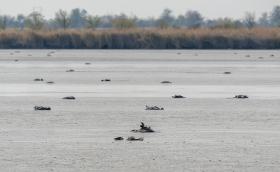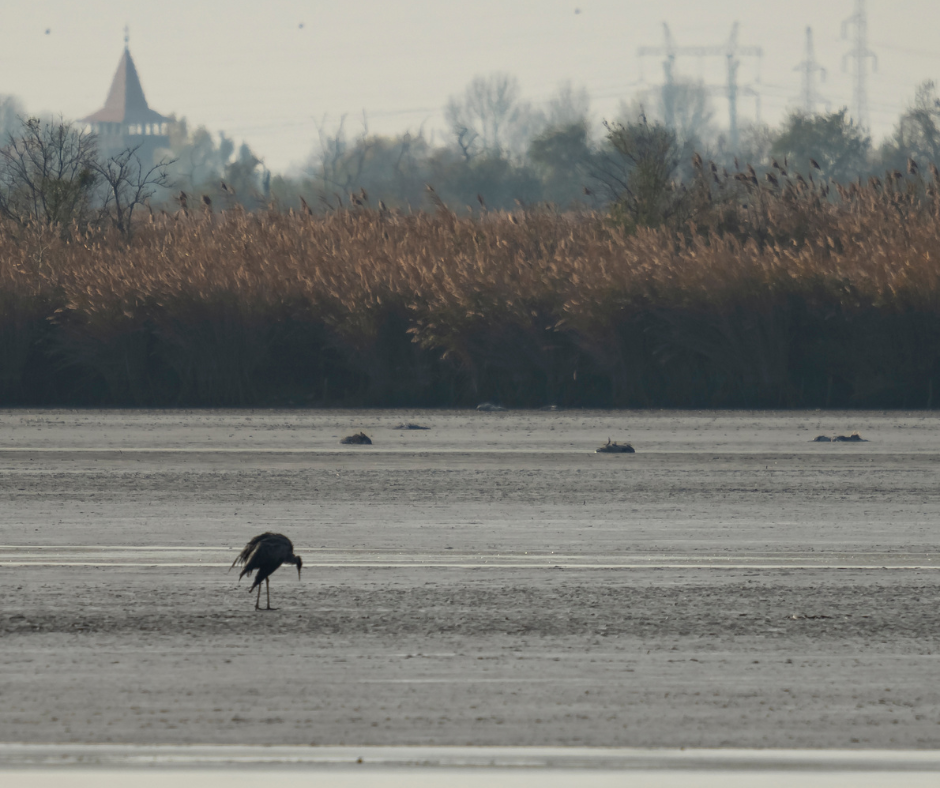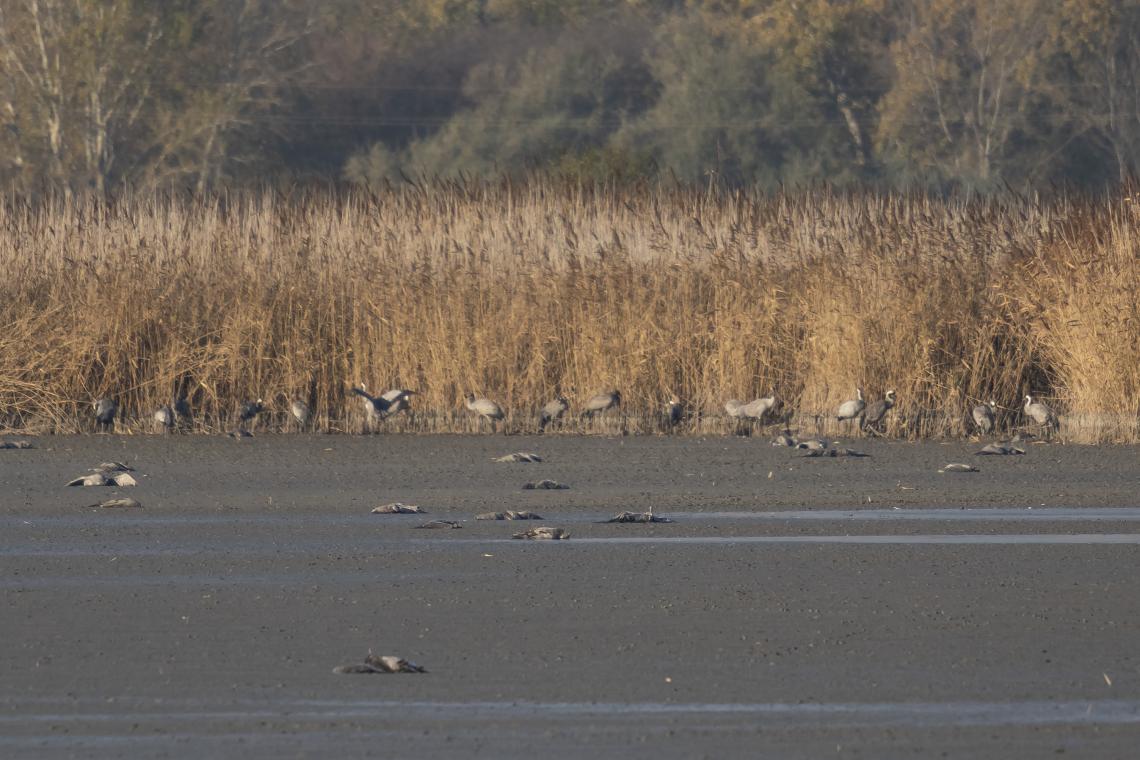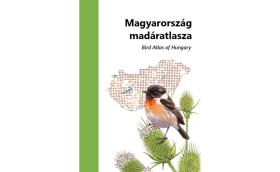Avian influenza takes toll on migratory cranes

Darvak elhullása/Deceased cranes (Fotó: Tokody Béla)
Avian influenza is a viral disease affecting both wild and domestic birds. Over the past years, we have regularly heard and read news about cases and outbreaks of varying sizes. Unfortunately, this year is no exception, as both poultry and waterfowl keepers, as well as conservationists, are closely monitoring events in recent weeks with great concern. In early November, infections appeared in Hajdú-Bihar and later in Szabolcs-Szatmár-Bereg counties, spreading to other areas of the Great Hungarian Plain, including the famous migration site, Hortobágy, and the Southern Great Plain. The virus has now begun to decimate the birds resting here during the peak of crane migration. But what exactly is this deadly disease threatening birds?
Originally, various influenza viruses were moderately virulent pathogens multiplying in the intestines of waterfowl. Agricultural intensification, particularly in large-scale poultry farming, is clearly associated with the development of highly pathogenic strains responsible for epidemics. Due to their susceptibility to host changes, recombination, and mutations, their infectivity varied widely. Among bird-origin strains, low and high pathogenicity strains are distinguished, referring to their infectivity.
But why does a highly pathogenic variant of the virus arise and persist, even if it is evolutionarily unfavourable as it destroys the host organism?
The answer lies in the origin of the virus: in large-scale poultry farming, infected stocks are culled for epidemic control, hindering the evolutionary process that would increase the immunity of host organisms. Vaccination practices in many Asian countries exert evolutionary pressure on the virus, pushing it to become more infectious and capable of overcoming vaccine protection. These two effects together have driven the evolution of avian influenza viruses towards increased infectivity and pathogenicity.

In the last two decades, the virus has reached Europe multiple times through migratory birds, occasionally spreading to North America, Africa, and the Middle East. Epidemics transmitted by wild birds have caused billions in damages to European poultry farmers, partly due to inadequate epidemic control measures and inadequate farm hygiene standards. It was only a matter of time before the large quantity of viruses introduced into the environment would establish itself in western Eurasia, sustaining the virus in populations of local ducks, geese, gulls, pelicans, cranes, swans, and shorebirds. It's challenging to pinpoint this moment, but it can be placed in the early 2020s, because it is since then, that we cannot state that the whole of Europe is free from the virus; it has been active in some form for the past three years.
In addition to culling tens of millions of domestic poultry, the significance of the virus from a wildlife conservation perspective is also growing. During the recent waves of epidemics, an increasingly infectious H5N1 strain has reached every continent except Australia, pushing various seabirds, herons, raptors, pelicans, cranes, swans, and shorebird populations to the brink of collapse. (https://www.birdlife.org/news/2022/08/08/an-unprecedented-wave-of-avian-flu-has-been-devastating-bird-populations-across-the-northern-hemisphere/). In more and more cases, mammalian infections are occurring, with seals, cats, and mustelids contracting the infection and potentially succumbing.
It can only be stated with certainty about the current situation after the epidemiological investigation, but it is likely that the cranes encountered the virus when they arrived in the Carpathian Basin, as there is no news of large-scale crane deaths to the north or east. However, positive (infected) waterfowl were found in the summer and autumn in Hungary, thanks to the active monitoring conducted by the MME/BirdLife Hungary coordinated by the National Food Chain Safety Office, involving more than six thousand wild bird samples collected in connection with bird ringing. During the summer and autumn, infected birds and their carcasses were mainly found in gull and tern colonies, with only sporadic positive samples in other bird species. Due to the dry late summer and early autumn, birds gathered in larger groups at the remaining few roosting sites in recent times, resembling the density of large-scale poultry farms, facilitating the spread of the virus. The crane is particularly sensitive to infection, as evidenced by a previous case (https://savingcranes.org/2022/01/cranes-and-avian-influenza-update/), causing hundreds, or even thousands of deaths in the main roosting sites. In the Hortobágy region, it began a few weeks after the crane migration reached its peak at almost 200 000 individuals, and the problem spread with the migrating birds to the Southern Great Plain and Western Transdanubia. Based on field information, the current estimate of the number of dead cranes in Hungary is between 10,000 and 20,000. As more accurate data becomes available, we will update this estimate.

Avian influenza is generally not highly contagious to humans, but the chance of transmission is not zero. In most human cases, elderly animal husbandry professionals with weak immune systems were infected, who had prolonged contact with sick birds without proper protective equipment in some epidemic situations. While getting infected is not easy, caution is crucial, as avian influenza is much more severe than human influenza.
How can a birder help, and what applies to a person doing field work during an outbreak?
- The most important task is to preserve your own and your environment's health, meaning we should not be carriers of the epidemic. In case of accidental contact with suspicious birds, do not approach birds, whether wild or domestic, in the next few days, wash and disinfect your clothes and footwear. The same applies to fieldwork conducted in infected areas. The progress of the epidemic can be followed on this website: https://portal.nebih.gov.hu/madarinfluenza (Hungarian page)
- In case of widespread wild bird deaths or the observation of suspicious or weakened waterfowl or birds of prey, notify the local veterinary authority and, in case of a protected species, the employee of the national park, and avoid touching the bird if possible.
- Wear a mask and gloves in all contact situations, but if possible, avoid these situations altogether. Transporting suspicious birds to rescue centers, collecting them is not only against the law but also endangers the rescue center itself, as after the laboratory confirmation of the infection, all birds in that place must be destroyed.
Monitoring of wild birds and detecting cases over the largest possible areas during outbreaks contribute to a more thorough understanding of the course of the disease, reducing risks, and mitigating the effects of the epidemic. MME/BirdLife Hungary is committed to gathering all information about avian influenza, participating in the fight against avian influenza, and protecting our domestic breeding and migrating birds and, in addition, the protection of farmed poultry.
Dr. Balázs Koleszár
The author is a veterinarian, microbiologist, coordinator of the MME Avian Influenza Monitoring, and an external consultant for the National Food Chain Safety Office's National Epidemiological Center.
Further reading:
https://www.gov.uk/government/news/bird-flu-avian-influenza-latest-situation-in-england
https://www.who.int/emergencies/disease-outbreak-news/item/2023-DON468

